That tiny black dot crawling across your kitchen counter isn’t what you think it is. Neither is that “bee” buzzing around your garden or the “spider” hanging from your porch light. Every day, we encounter countless insects and arachnids, yet most of us confidently misidentify them with startling regularity. Our brains love shortcuts, and when it comes to bugs, we rely on quick visual cues that often lead us astray.
The Ant That Isn’t Really an Ant
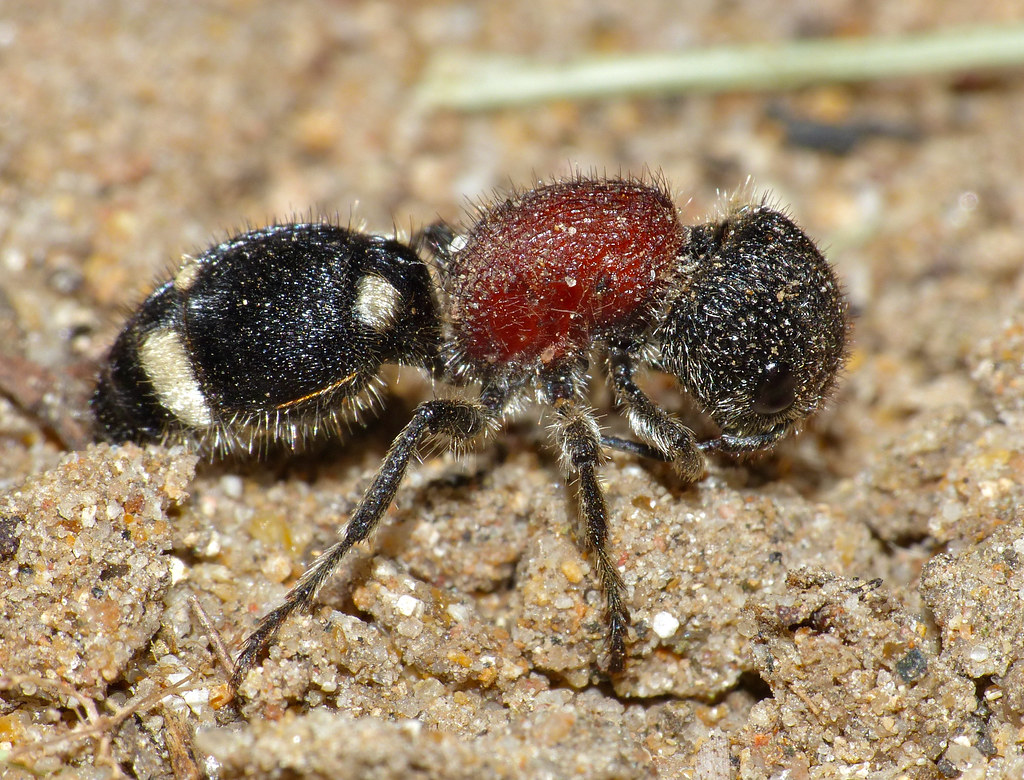
You spot a wingless black insect marching across your floor and immediately think “ant,” but there’s a good chance you’re looking at a wingless wasp instead. Velvet ants, despite their name, are actually wasps that have lost their wings through evolution. These fuzzy, brightly colored insects are often mistaken for ants due to their similar size and ground-dwelling behavior.
The telltale difference lies in their body structure and movement patterns. True ants have a distinct three-segment body with a narrow waist, while velvet ants have a more robust, less segmented appearance. Their movement is also more erratic and less organized than the methodical marching of actual ants.
What makes this misidentification particularly concerning is that velvet ants pack a powerful sting that can be extremely painful. Unlike true ants, these wasps are solitary creatures that don’t form colonies, making them less predictable in their behavior.
The Bee That’s Actually a Fly
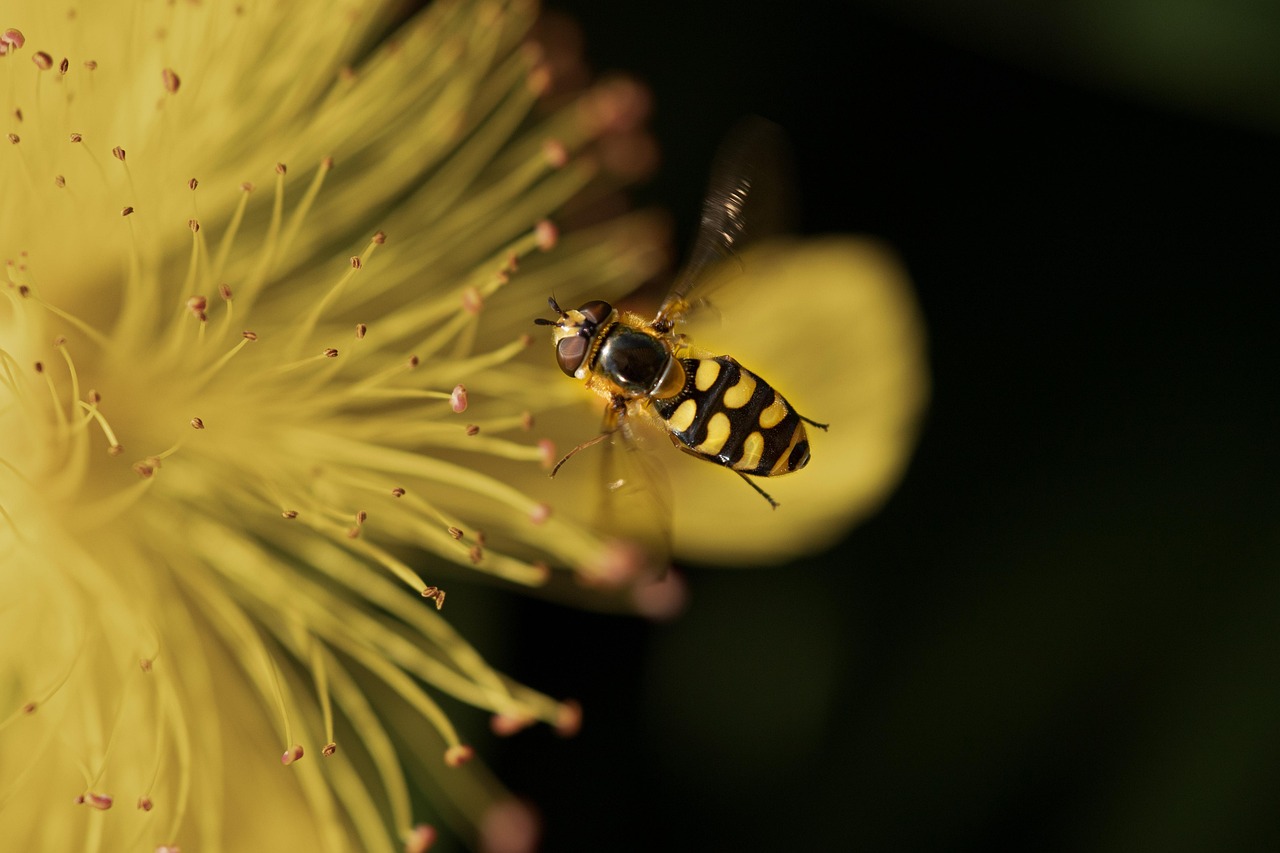
That yellow and black striped insect hovering near your flowers might not be the hardworking bee you think it is. Hover flies, also known as flower flies or syrphid flies, are master mimics that have evolved to look remarkably similar to bees and wasps. This clever disguise protects them from predators who avoid stinging insects.
The key difference lies in their eyes and flight patterns. Hover flies have large, prominent eyes that take up most of their head, while bees have smaller, more proportioned eyes. Additionally, hover flies can actually hover in place and dart quickly in different directions, something bees cannot do with the same precision.
These beneficial insects are often more effective pollinators than many people realize, visiting flowers frequently throughout the day. Their larvae also help control garden pests, making them valuable allies that deserve recognition rather than swatting.
The Spider That Lives in Water
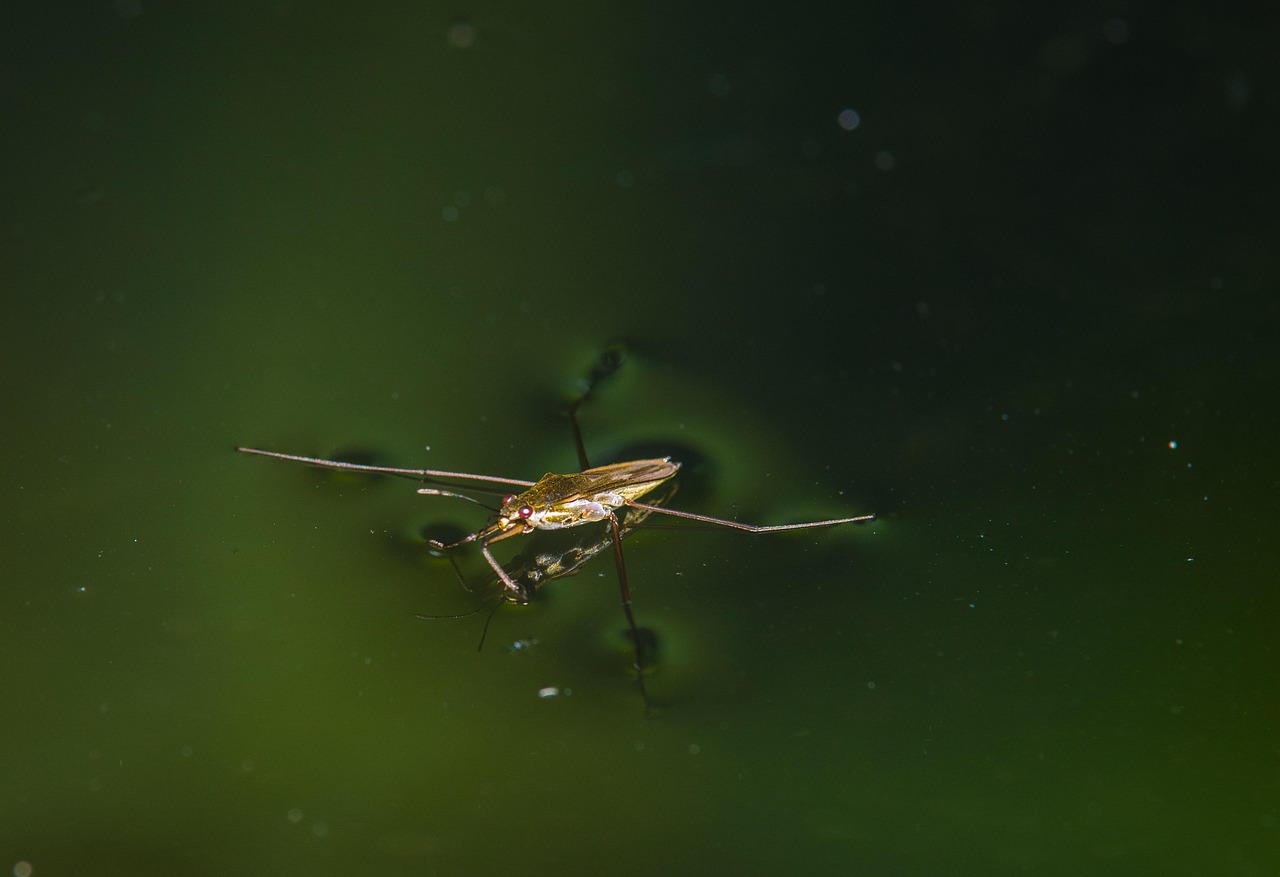
You notice something with long legs skimming across the surface of a pond and assume it’s a spider, but you’re likely observing a water strider instead. These fascinating insects belong to the true bug family and have evolved specialized adaptations for life on water surfaces. Their legs are covered in tiny hairs that trap air bubbles, allowing them to literally walk on water.
Unlike spiders, water striders have antennae and undergo incomplete metamorphosis, developing from nymphs that look similar to adults. Spiders lack antennae entirely and develop through a completely different process. Water striders also have piercing mouthparts designed for sucking fluids from prey, while spiders inject venom through fangs.
The confusion often arises because both creatures have long, thin legs and similar hunting behaviors. However, water striders are actually more closely related to bed bugs and aphids than to any arachnid.
The Butterfly That’s Really a Moth
Bright colors and daytime activity don’t always mean you’re looking at a butterfly. Many moths are active during the day and display vibrant colors that rival their butterfly cousins. Hummingbird clearwing moths, for instance, are often mistaken for tiny hummingbirds or large butterflies as they hover around flowers feeding on nectar.
The most reliable way to tell the difference is through antennae shape and wing position at rest. Butterflies have thin antennae with club-shaped tips, while moths typically have feathery or thread-like antennae. When resting, butterflies hold their wings vertically above their bodies, whereas moths usually keep their wings horizontal or folded tent-like over their backs.
This misidentification matters because moths are often underappreciated pollinators that play crucial roles in ecosystems. Many flowers have actually evolved specifically to attract night-flying moths, and some plants depend entirely on these nocturnal visitors for reproduction.
The Cockroach That’s Actually Beneficial
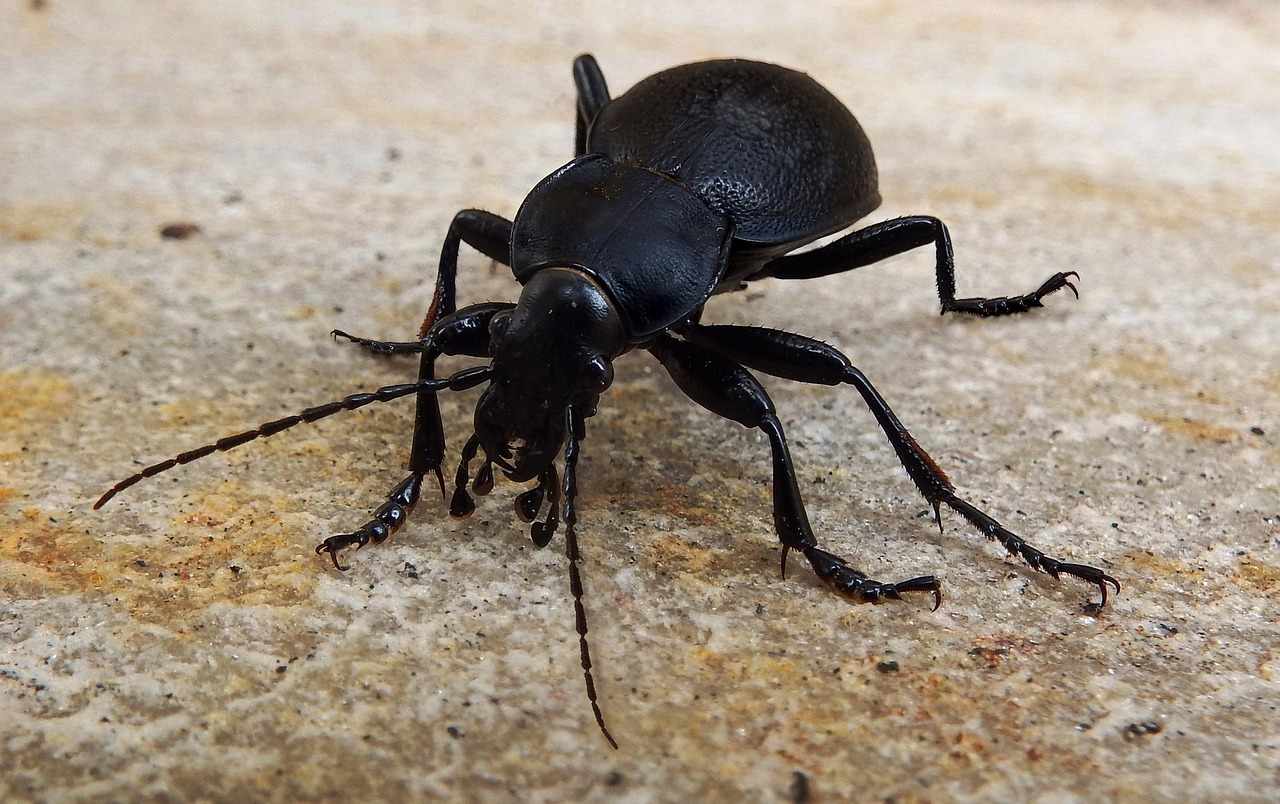
That flat, dark brown insect scurrying across your basement floor triggers an immediate “cockroach” response, but it could be a ground beetle instead. These beneficial predators are often confused with cockroaches due to their similar size, color, and quick movements. However, ground beetles are actually helping to control the pest populations in your home and garden.
The key differences lie in their body shape and behavior. Ground beetles have a more elongated, streamlined body with prominent mandibles (jaws) visible from above. Cockroaches have a more oval, flattened body with their head tucked under a shield-like structure. Ground beetles also tend to move in straighter lines rather than the erratic scurrying pattern of cockroaches.
Most ground beetles are nocturnal hunters that feed on other insects, including many species we consider pests. They’re particularly effective at controlling caterpillars, aphids, and other garden troublemakers, making them valuable allies that deserve protection rather than extermination.
The Wasp That’s Harmless to Humans
You see a wasp-like insect near your home and immediately reach for the spray, but it might be an ichneumon wasp – a completely harmless species that can’t sting humans. These parasitic wasps are often mistaken for their aggressive cousins due to their similar appearance and flight patterns. However, their stinger is actually an ovipositor designed only for laying eggs in other insects.
Ichneumon wasps are typically larger than common wasps and have longer antennae that they constantly move while searching for hosts. Their bodies are often more slender with a distinctive “wasp waist,” and many species have extremely long, thread-like ovipositors that extend behind their bodies like tails.
These insects are actually beneficial predators that help control pest populations by parasitizing caterpillars, beetle larvae, and other insects that damage crops and gardens. A single ichneumon wasp can eliminate dozens of pest insects during its lifetime, making them valuable natural pest control agents.
The Termite That’s Flying Around Your Light
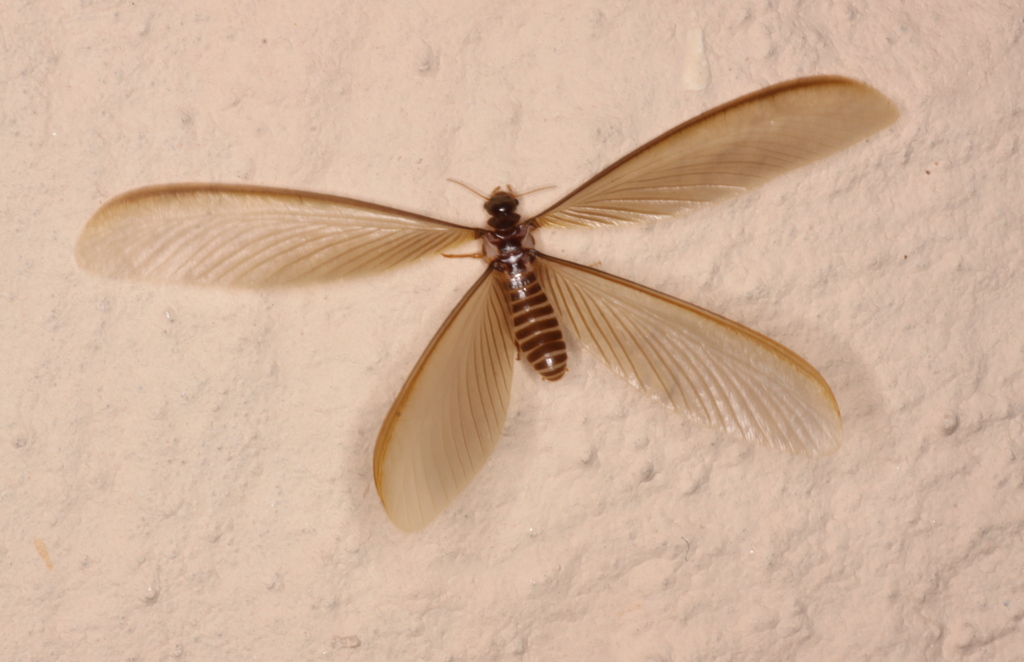
Those winged insects swarming around your porch light after a rain aren’t necessarily termites, despite their similar appearance. Flying ants, particularly during their nuptial flights, are often confused with termite swarmers. This misidentification can lead to unnecessary panic and expensive pest control treatments.
The easiest way to distinguish between flying ants and termites is through their antennae and wing structure. Flying ants have elbowed antennae with distinct segments, while termites have straight, bead-like antennae. Additionally, flying ants have wings of different sizes (front wings longer than back wings), whereas termite wings are all the same length.
Body shape also provides clues – flying ants maintain their characteristic pinched waist even with wings, while termites have a more uniform, cylindrical body shape. Understanding this difference can save homeowners from costly misdiagnoses and inappropriate treatments.
The Flea That’s Actually a Springtail
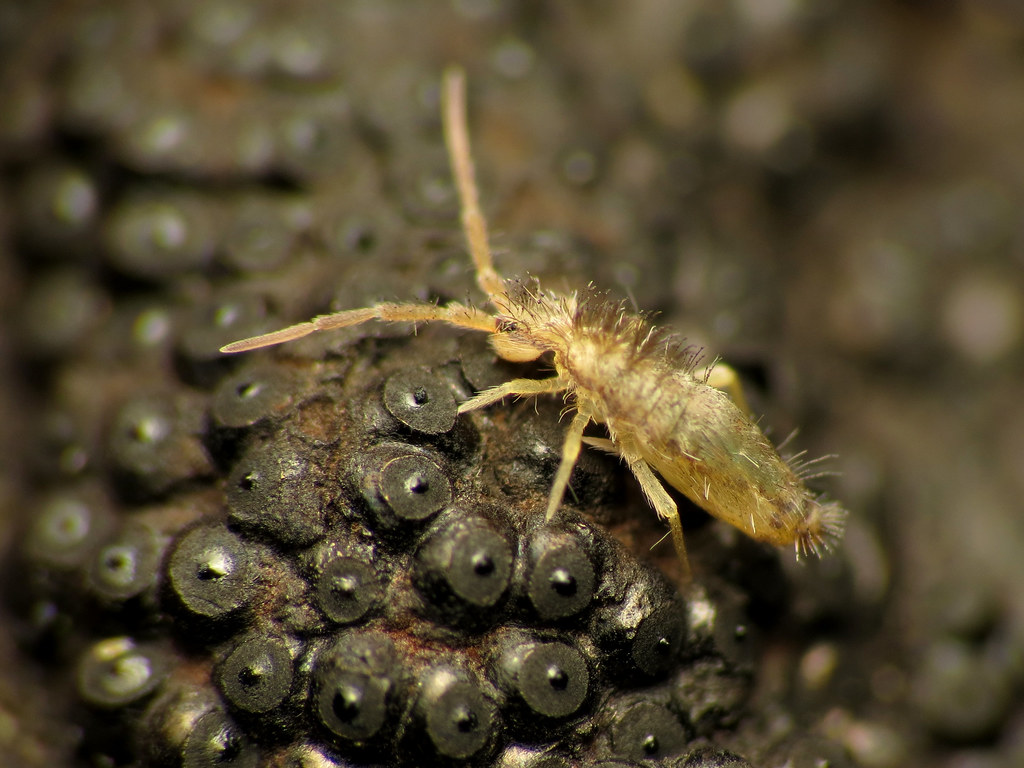
Those tiny jumping insects you notice in damp areas of your home aren’t necessarily fleas. Springtails, also called snow fleas, are primitive insects that can leap impressive distances relative to their size. Their jumping ability and small size often lead to flea misidentification, especially in households with pets.
Springtails are actually beneficial decomposers that feed on decaying organic matter, mold, and fungi. Unlike fleas, they don’t bite humans or animals and prefer moist environments like bathrooms, basements, and areas with water damage. Their bodies are more cylindrical and less flattened than fleas, and they have a distinctive forked structure on their abdomen that acts like a spring.
While finding springtails might indicate excess moisture in your home, they’re not a health threat and often disappear once humidity levels are reduced. Treating them like fleas with inappropriate pesticides is both unnecessary and potentially harmful to beneficial soil organisms.
The Tick That’s Really a Spider
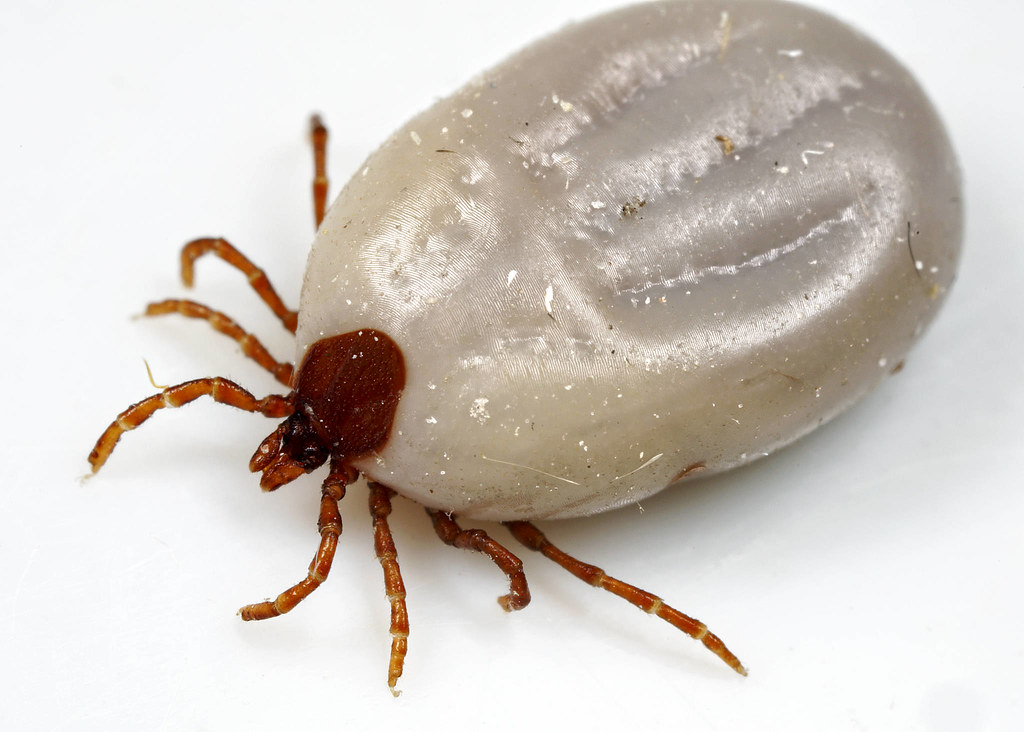
In tall grass or wooded areas, you might spot a small, dark, round arachnid and immediately think “tick,” but it could be a harmless spider instead. Several spider species, particularly young wolf spiders and some orb weavers, can appear remarkably similar to ticks when viewed quickly or from a distance.
The key difference lies in their leg positioning and movement patterns. Ticks have eight legs that extend from the sides of their body, but they move slowly and deliberately. Spiders, even small ones, typically have longer legs relative to their body size and move with quick, coordinated motions. Ticks also lack the distinct body segments visible in spiders.
Additionally, ticks are primarily found on animals or in areas where animals frequent, while spiders are more commonly found in webs or hunting in vegetation. Understanding this difference can prevent unnecessary worry and help you respond appropriately to genuine tick encounters.
The Earwig That’s Not What You Think
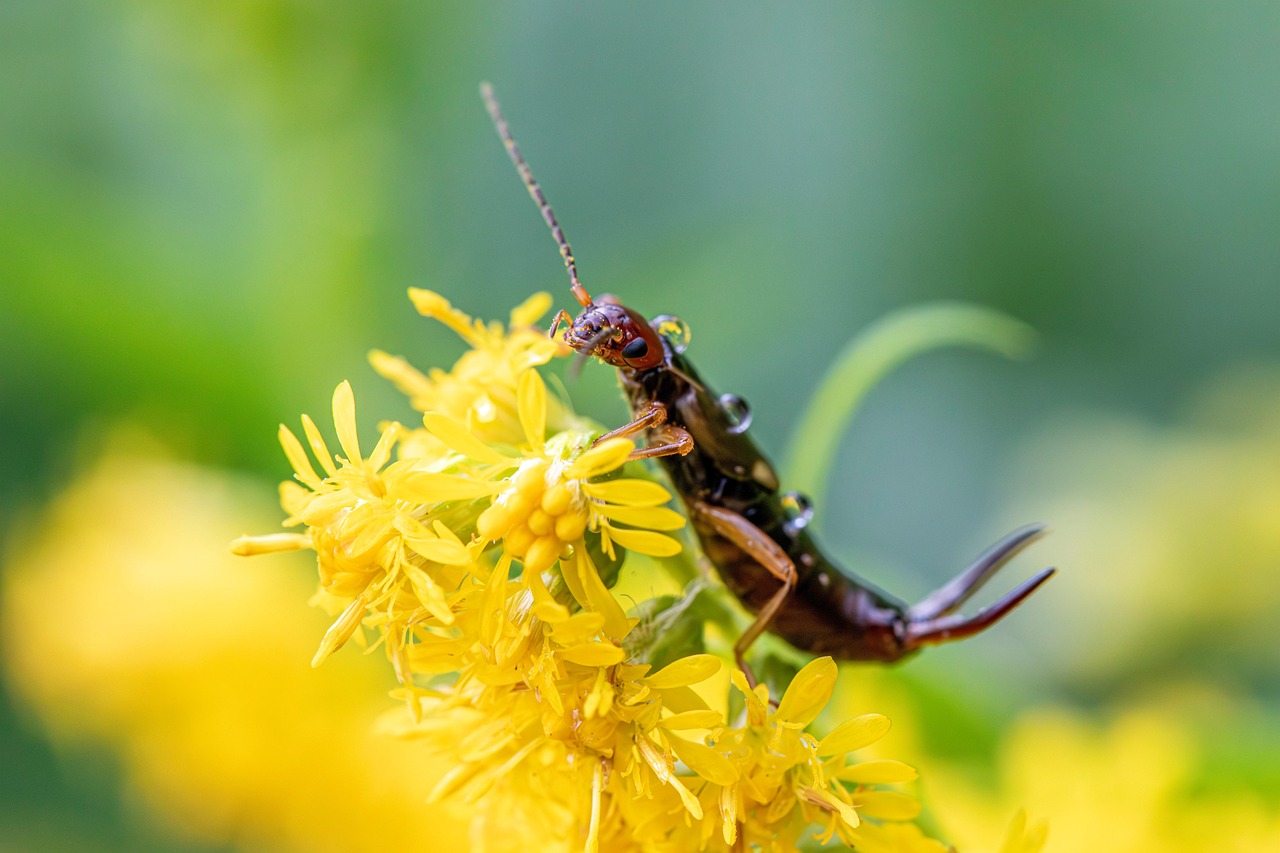
Those insects with prominent pincers on their rear end strike fear into many people, but earwigs are far more harmless than their menacing appearance suggests. Despite urban legends, earwigs don’t crawl into ears or pose any significant threat to humans. Their fierce-looking pincers are primarily used for defense and capturing prey, not for attacking people.
Many people confuse earwigs with various other insects, including dermestid beetles or even small cockroaches, especially when the lighting is poor. The distinctive pincers (called cerci) are the most reliable identifying feature, along with their elongated, flattened body shape and short wing covers.
Earwigs are actually beneficial garden inhabitants that feed on aphids, mites, and other pest insects. They also help break down decaying organic matter, contributing to soil health. Their presence in gardens usually indicates a healthy ecosystem rather than a problem requiring intervention.
The Silverfish That’s Actually a Firebrat
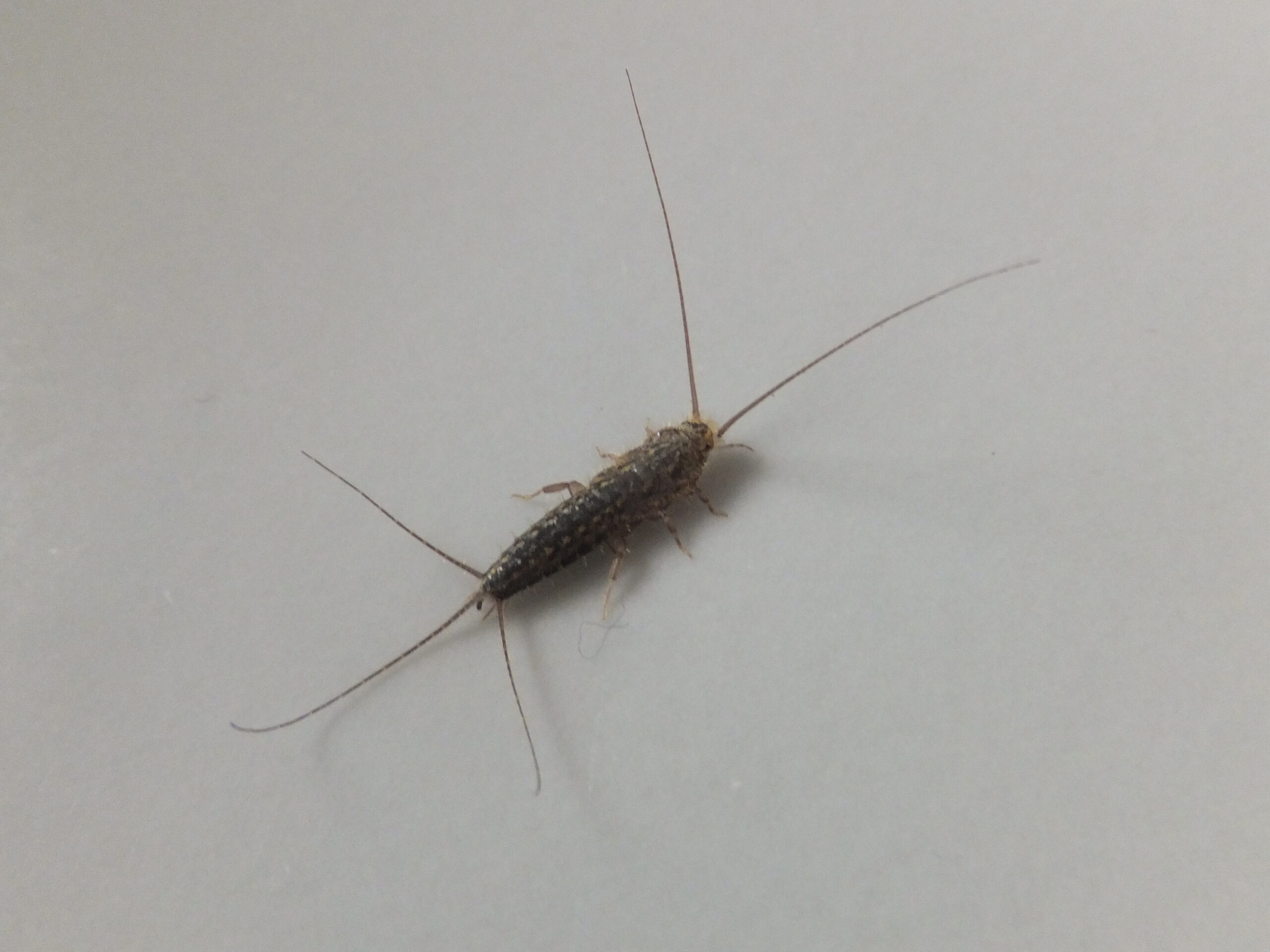
Those silvery, fish-like insects darting across your bathroom floor might not be silverfish at all, but rather their close relatives called firebrats. These two species are often confused due to their similar appearance and behavior, but they have different habitat preferences and environmental needs.
Firebrats prefer warmer, drier conditions and are often found near heat sources like furnaces, hot water heaters, and fireplaces. Silverfish, on the other hand, prefer cool, humid environments and are more commonly found in basements, bathrooms, and other damp areas. Firebrats also have a more mottled, brownish appearance compared to the metallic silver color of true silverfish.
Both species are harmless to humans but can damage paper, fabrics, and other household items. Correctly identifying which species you’re dealing with helps determine the most effective control strategies and environmental modifications needed to discourage them.
The Centipede That’s Really a Millipede
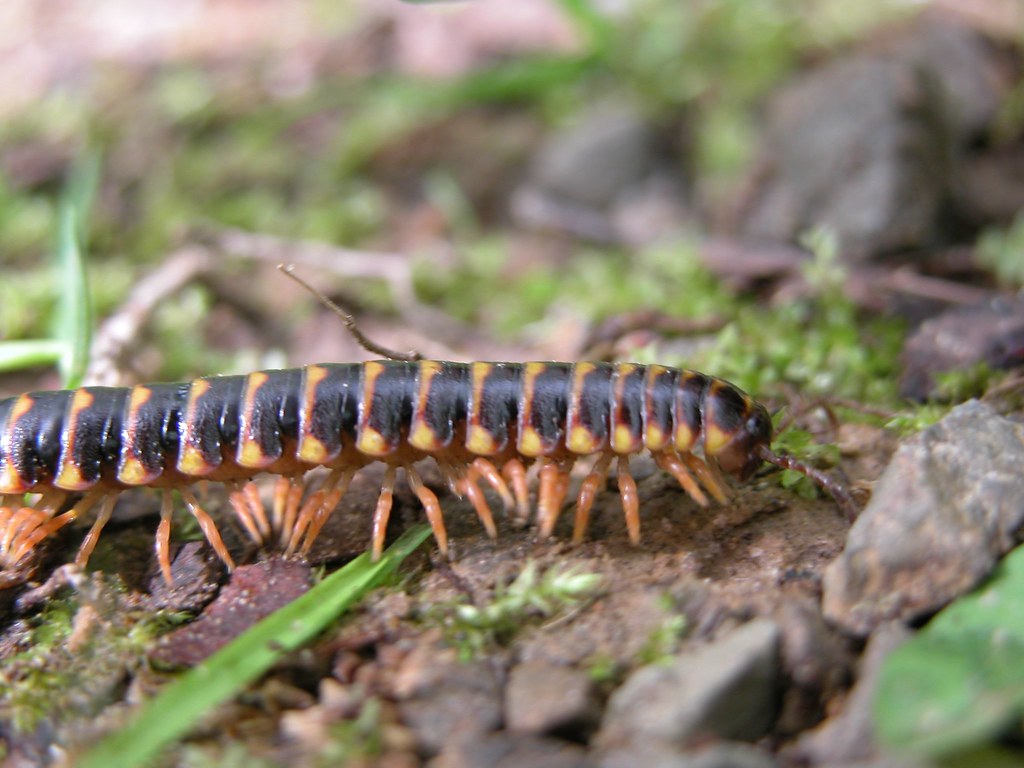
Those multi-legged creatures crawling through your garden are often lumped together, but centipedes and millipedes are fundamentally different animals with distinct behaviors and ecological roles. The confusion is understandable given their similar appearance, but the differences are significant once you know what to look for.
Centipedes are predators with one pair of legs per body segment, flattened bodies, and prominent antennae. They move quickly and can deliver a painful bite with their venomous front legs. Millipedes, conversely, are gentle decomposers with two pairs of legs per segment, cylindrical bodies, and slower movements. They roll into a ball when threatened rather than attacking.
This distinction matters because centipedes are beneficial predators that control pest populations, while millipedes are important decomposers that help break down organic matter. Both play valuable roles in ecosystems and generally deserve protection rather than elimination.
Why These Misidentifications Matter
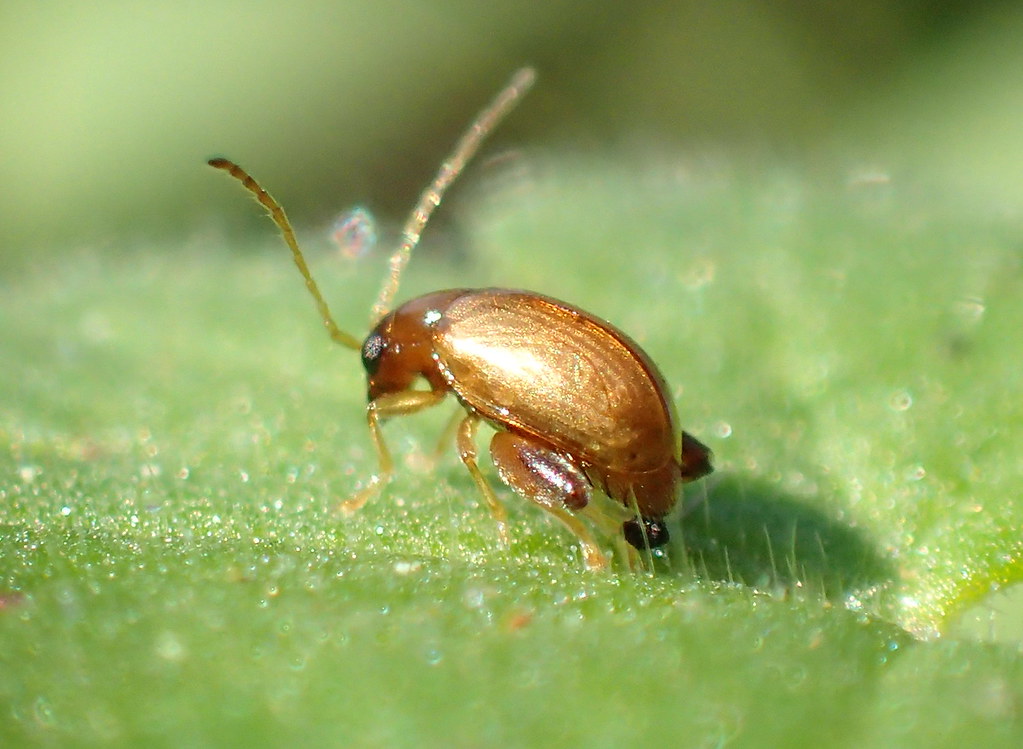
These common mix-ups aren’t just academic curiosities – they have real consequences for how we interact with the natural world around us. When we misidentify beneficial insects as pests, we might use unnecessary pesticides that harm helpful species and disrupt ecological balance. This creates a cascade effect that can actually increase pest problems over time.
Accurate identification also helps us make better decisions about pest control and garden management. Understanding which insects are allies rather than enemies allows us to work with nature instead of against it. Many beneficial insects are declining due to habitat loss and pesticide use, making their proper identification and protection increasingly important.
Furthermore, teaching ourselves and others to identify insects correctly fosters a deeper appreciation for the complexity and beauty of the natural world. Each misidentified bug represents a missed opportunity to learn about the intricate relationships that keep our ecosystems functioning.
The next time you spot a small creature scurrying across your floor or buzzing around your garden, take a moment to look closer before reaching for the spray bottle. That “pest” might actually be working hard to keep your home and garden healthy, earning its place as a valuable neighbor rather than an unwelcome intruder. What other assumptions about the natural world might you be carrying around without realizing it?
